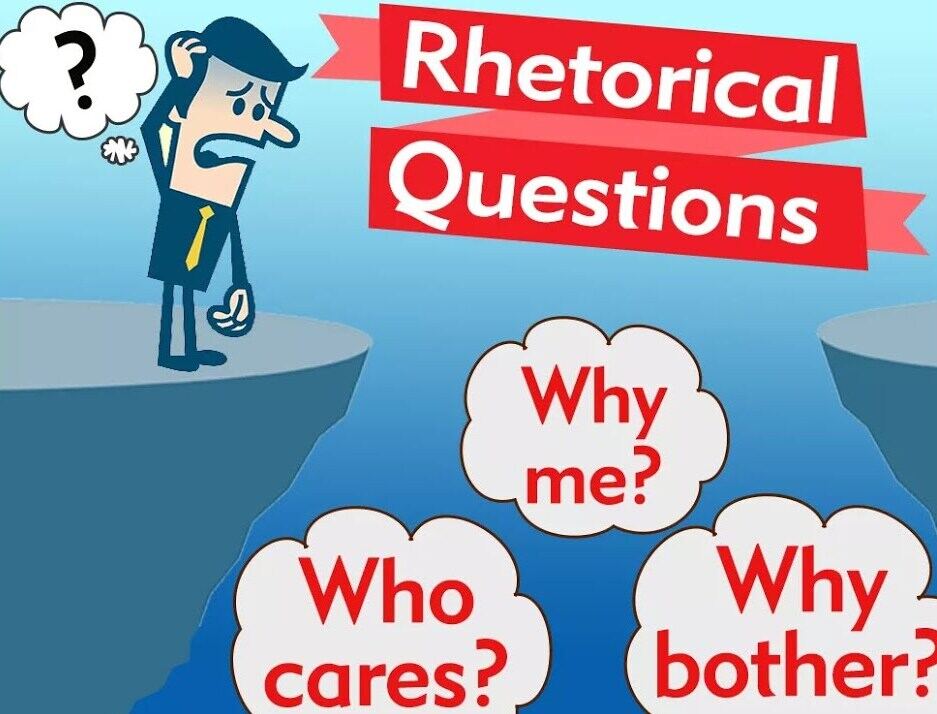In the realm of communication – words serve as potent tools’ that not only relay information but also influence, stimulate thinking, and motivate transformation. Among the various figures of speech that enhance our language, rhetorical questions hold a unique position. Frequently used in literature, speeches and persuasive writing – rhetorical questions are meant to be not answered – they are designed to persuade thought. However, what is a rhetorical question exactly, and why does it work so well in communication?

Definition of rhetorical question
A rhetorical question is a figure of speech that is used as a question with the intention of making a point or stimulating thought rather than eliciting a real response. It may have a clear response or none at all but the goal is not to acquire information. Rather, it highlights a concept, presents a subject or supports the writer’s or speaker’s stance
The power of Rhetorical question in persuasive writing
Rhetorical questions are especially impactful in persuasive writing and speeches – where the goal is to sway the audience toward a specific perspective. They function as tools’ to captivate the audience, stimulate reflection, and gently lead the reader or listener toward consensus.
Consider, for instance, a political address. A candidate could inquire, “do we want our children to grow up in a world lacking clean air?” This question does not need an answer – it’s evident that the speaker suggests clean air is vital, and the question aims to elicit agreement and worry.
Likewise, in daily conversation, rhetorical questions such as “isn’t it obvious?” Or “who wouldn’t desire to succeed?” Help convey opinions strongly and encourage consensus without requiring discussion
Functions of rhetorical questions
The use of rhetorical questions fulfills several purposes in both writing and speaking, including
Raising doubt for challenge: inspires the audience to reevaluate a view point
Point-emphasizing: highlights a specific concept.
Getting people to think: encourages contemplation of difficult problems.
Scoffing or teasing: used ironically to undermine a counterargument
Involving the audience: gives them a sense of involvement or direct communication.
Topic introduction: establishes the tone for the discussion that follows.
By thoughtfully incorporating rhetorical questions in a text or speech, communicators can influence the audience’s feelings and responses without direct guidance
Different types of rhetorical questions
There are three primary categories of rhetorical questions that fulfill various rhetorical functions:
- Anthypophora (or hypophora)
This kind of rhetorical question is promptly followed by an answer from the speaker or writer. It is a typical speech tactic to keep the story under control.
For instance, “why must we have action right away? because doing nothing comes at too great a cost. This helps create a smooth conversation and allow the speaker to ask and address any queries that the audience might have
- Erotesis
Erotesis is the most common type of rhetorical question used to convey a forceful affirmation or denial. It makes a strong statement and intensifies feelings.
Frequently employed to stir anger or enthusiasm, it offers no uncertainty regarding the speaker’s position, encouraging the audience to feel pressured concur.
For instance,
Can we really accept such injustice any longer?
Instead of using logic, the goal is to emotionally influence the listener
- Epiplexis
This form serves to convey criticism or disapproval, frequently aimed at shaming or reprimanding the audience or a conflicting perspective.
For instance: “do you just think money grows on trees?”
Although this questioning style can be effective, it have to be utilize carefully since, if not counterbalanced with intelligent information, it could appear across as hostile
Rhetorical questions in persuasive writing
Among the most common contexts rhetorical questions used is in persuasive writing. In advertisements, opinion articles, or political addresses, they can influence the audience’s beliefs, confront perspectives, or motivate action.
they are employed in persuasive situation as follows:
- To mock an opposing argument
An opponent’s argument can be rendered absurd or unpersuasive by using rhetorical questions.
For instance: “and how are you going to obtain the funds to support this project?” ” From the enchanted money tree?”
- To promote reflection
Activists’ and leaders frequently employ rhetorical questions to encourage their audience to reflect on underlying truths.
- Dr Martin Luther King Jr. gave the following example: “Now, what does all of this mean in this great period of history?”
Here, the rhetorical question serves as a springboard for a call to action and solidarity
- To motivate action
Rhetorical questions can inspire individuals to act right away when they are utilised skillfully.
- An excerpt from Emma Watson’s gender equality speech in UN: “if not me, who? If not now, when?”
These questions allow no space for passivity, compelling audience to experience the sense of urgency and individual accountability
Rhetorical questions in literature
In literature, rhetorical questions fulfill both stylistic and thematic purposes. Authors employ them to stir emotions, showcase a character’s inner struggles, or encourage readers to reflect on profound interpretation.
Among the well known instances are:
- “Shall I liken you to a summer’s day?” – William Shakespeare
- “O wind; if winter arrives, can spring be far behind?” – Percy Bysshe Shelley.
- “So comrades, is it not clear that all the evils of this life of ours spring from the tyranny of human beings?” – George Orwell, Animal farm
- “How many paths’ must a person traverse, before you consider him a man?” – Bob Dylan, “Blowin’ in the wind”
These inquiries encourage self-reflection and frequently lead the audience to a certain lesson, idea or conclusion
Tips for using rhetorical questions effectively
When creating persuasive writing or an engaging speech, keep these tips in mind:
Recognise your audience: make sure your inquiry speaks to their experiences and values.
Use sparingly: the effect may be lessened by overuse. placement is crucial.
Avoid ambiguity: the main idea should be evident, even if no response is anticipated.
Match tone: sarcastically worded questions work well for satire but not for serious conversation.
Follow up: begin with rhetorical questions to introduce a point, then provide compelling reasoning or proof
Rhetorical questions go beyond just being clever phrasing – they serve as a strong source for communication. When utilized properly, they can provoke thought, motivate and unite. Whether you are composing an essay, delivering a speech or generating marketing material, mastering rhetorical questions can enhance your ability to capture attention and encourage thought
Thus, the next time you wish to stimulate your audience’s thinking, persuade effectively or merely underline a point – pose a rhetorical question.
Because truly, isn’t that the essence of effective communication?





